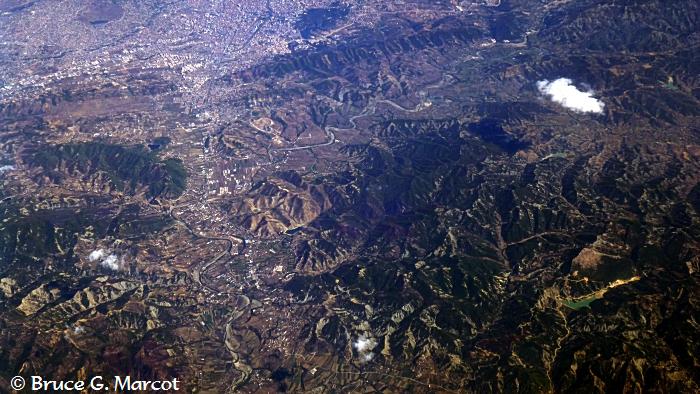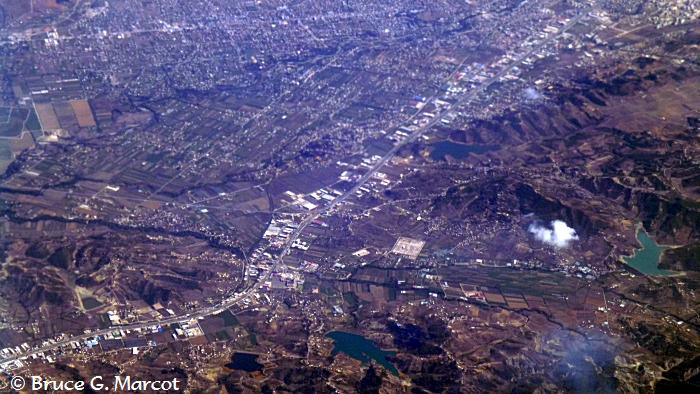|
Explanation: Look
closely at the patterns of human settlements in these aerial photos I
took during a passage over central Albania just off the Adriatic
Sea.

What do you notice first? It is that the valleys are fully
occupied and developed.
So
it has been for centuries, here and elsewhere around the globe.
Why? It is
because valleys are far easier to access than are the steep surrounding
mountains. Valleys have rivers which serve as transportation corridors
for people and goods. Valleys have colluvial soils that can be fertile
for agriculture. Valleys may already have attracted wild plants and
animals that can serve as subsistence foods. Valleys have sediments that
can hold substantial groundwater for wells and irrigation. Valleys
provide room for growth. These and other reasons explain humanity's
biogeographic, socioecological, and sociobiological attraction to
valleys. In
general, valleys provide the best habitats for humans to settle, prosper,
and spread. Can you think of
some parallels to this in the natural world? One
instance involves the spread of Barred Owls (Strix varia) down the
western edge of North America. Barred Owls often first invade hardwood
forests in bottomlands and valleys, and then move upslope to intersect with,
and outcompete, threatened Northern Spotted Owls (Strix occidentalis
caurina). The Barred Owl's habitat preference is not unlike our
own.

The town of Gjokaj in west-central Albania continues this pattern
of valley occupancy, here strikingly shown as linear features
along a riverine causeway.
|
Index |
Location | Search | About EPOW | ... Next >